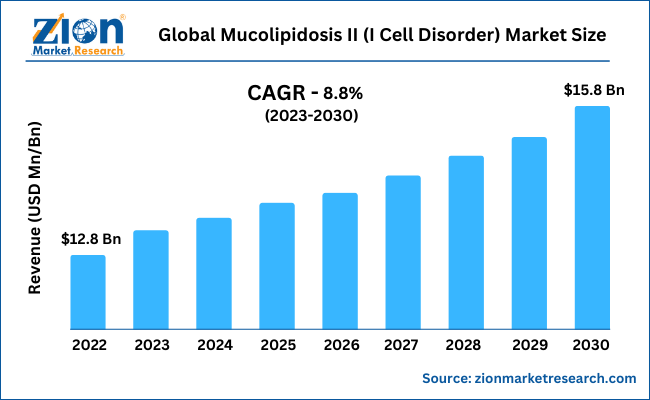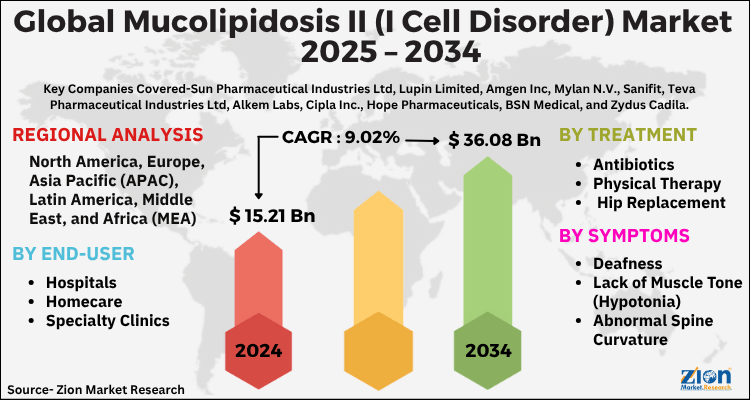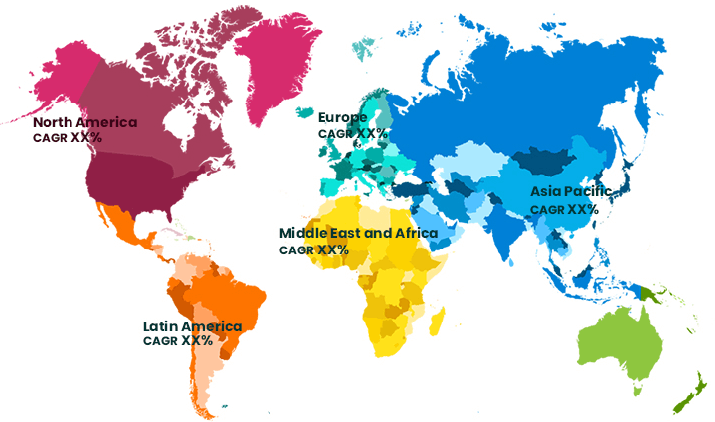Mucolipidosis II (I Cell Disorder) Market Size, Share, Growth Report 2034

Mucolipidosis II (I Cell Disorder) Market By Symptoms (Deafness, Lack of Muscle Tone (Hypotonia), Abnormal Spine Curvature, Changing Proportion of Mental Retardation, Low Growth of Gross & Fine Motor Skills, and Others), By Treatment (Antibiotics, Physical Therapy, Hip Replacement, Experimental Therapies, and Others), By End-User (Hospitals, Homecare, Specialty Clinics, and Others), and By Region - Global And Regional Industry Overview, Market Intelligence, Comprehensive Analysis, Historical Data, And Forecasts 2025 - 2034
| Market Size in 2024 | Market Forecast in 2034 | CAGR (in %) | Base Year |
|---|---|---|---|
| USD 15.21 Billion | USD 36.08 Billion | 9.02% | 2024 |
Mucolipidosis II (I Cell Disorder) Market: Industry Perspective
The global mucolipidosis II (I cell disorder) market size was worth around USD 15.21 billion in 2024 and is predicted to grow to around USD 36.08 billion by 2034 with a compound annual growth rate (CAGR) of roughly 9.02% between 2025 and 2034.
The mucolipidosis II (I-cell disorder) market report is an indispensable guide on growth factors, challenges, restraints, and opportunities in the global marketspace. The report covers the geographical market along with a comprehensive competitive landscape analysis. It also includes cash flow analysis, profit ratio analysis, market basket analysis, market attractiveness analysis, PESTEL analysis, SWOT analysis, Porter’s five force analysis, and value chain analysis. Additionally, the mucolipidosis II (I-cell disorder) industry report explores the investor and stakeholder space to help companies make data-driven decisions.
Mucolipidosis II (I Cell Disorder) Market: Overview
Mucolipidosis II (I-cell disorder) is also referred to as I-cell disease and is a unique lysosomal storage ailment occurring due to deficient enzyme N-acetylglucosamine-1-phosphotransferase activity, leading to the inability of internalizing enzymes into lysosomes. In addition to this, the disorder is a rare and inherited one. Moreover, it is also referred to as sialidosis and the condition is segmented as a lysosomal storage disorder (LSD). In this disorder, genetic fluctuations interrupt the normal activity of lysosomes in human cells.
Furthermore, the symptoms and physical findings related to mucolipidosis are generally unfolded or disclosed within three to eight months post-birth of a child. The initial symptoms are corneal opacity and eye movement disorders. Reportedly, Mucolipidosis II is a rare disorder and is projected to occur in nearly 1 in 100,000 to 400,000 persons globally.
Key Insights
- As per the analysis shared by our research analyst, the global mucolipidosis II (I-cell disorder) market is estimated to grow annually at a CAGR of around 9.02% over the forecast period (2025-2034).
- Regarding revenue, the global mucolipidosis II (I-cell disorder) market size was valued at around USD 15.21 billion in 2024 and is projected to reach USD 36.08 billion by 2034.
- The global mucolipidosis II (I-cell disorder) market is anticipated to record massive growth over the forecast period, owing to favorable government policies and the allocation of funds for research projects for improving medical treatments.
- Based on symptoms, the low growth of the gross & fine motor skills segment is predicted to contribute majorly towards the market growth over the forecast timeline.
- In terms of treatment, the antibiotics segment is projected to account for a major share of the global market in 2025-2034.
- Region-wise, North America is projected to dominate the mucolipidosis II (I cell disorder) market over the forecast period.
Mucolipidosis II (I Cell Disorder) Market: Growth Factors
Massive demand for drugs for treating the symptoms of mucolipidosis II to boost the global market trends
Rise in cases of mucolipidosis II (I cell disorder) among the global population will prompt the expansion of the global mucolipidosis II (I cell disorder) market. The escalating need for a slew of drugs for treating the symptoms of mucolipidosis II (I-cell disorder), including delays in the growth of gross and fine motor skills, along with a surge in initiatives taken by public & private organizations globally for developing new treatments, is likely to accelerate the global market growth. Furthermore, the surge in the demand for improved medical therapies for metabolic disorders will increase the size of the global market in the years to come.
Furthermore, favorable government policies and allocation of funds for research projects for improving medical treatments will leverage the global market expansion. In addition to this, a prominent rise in the global population requiring effective medical treatment and the development of strong healthcare infrastructure facilities will favorably impact the global Mucolipidosis II (I-cell disorder) market.
Mucolipidosis II (I Cell Disorder) Market: Hindrances
Surging therapy prices to impede the global industry trends
Huge treatment costs are predicted to impede the expansion of the mucolipidosis II (I-cell disorder) industry across the globe. In addition to this, strict laws pertaining to the treatment of mucolipidosis II (I-cell disorder) can further decimate the growth of the global industry.
Mucolipidosis II (I Cell Disorder) Market: Opportunities
Approval of novel drugs by healthcare authorities across the globe creates new growth opportunities for the global market
Approval of new medicines by various governments and a huge focus on research & development activities for finding a cure as well as treating the mucolipidosis II (I cell disorder) will open new growth opportunities for the global mucolipidosis II (I cell disorder) market.
Mucolipidosis II (I Cell Disorder) Market: Challenges
Alterations in government laws to prove as the biggest challenge in the growth of the global industry
Changes in government regulations due to political uncertainty witnessed in various nations can pose a big challenge to the growth of the global Mucolipidosis II (I Cell Disorder) industry.
Mucolipidosis II (I Cell Disorder) Market: Segmentation
The global mucolipidosis II (I-cell disorder) market is sectored into symptoms, treatment, end-user, and region.
In terms of symptoms, the global mucolipidosis II (I-cell disorder) market is sectored into deafness, lack of muscle tone (hypotonia), abnormal spine curvature, changing proportion of mental retardation, low growth of gross & fine motor skills, and other segments. Furthermore, the low growth of the gross & fine motor skills segment, which accounted for more than one-fourth of the global market share in 2024, is predicted to retain its domination status even during 2025-2034. The segmental surge in the next eight years can be attributed to the lack of development of gross and fine motor skills witnessed in the children affected due to mucolipidosis II (I-cell disorder) after their birth.
Based on the treatment, the global mucolipidosis II (I-cell disorder) industry is divided into antibiotics, experimental therapies, hip replacement, physical therapy, and other segments. The antibiotics segment, which dominated the treatment segment in 2024, is predicted to account for a major market share over the forecast timeframe. The growth of the segment in the coming years can be due to the intake of antibiotics in emerging economies for treating mucolipidosis II (I-cell disorder).
In terms of end-user, the global mucolipidosis II (I cell disorder) market is sectored into specialty clinics, homecare, hospitals, and other segments.
Recent Breakthroughs
- In the first quarter of 2021, the U.S. FDA provided orphan drug distribution status to two gene therapies referred to as M6P Gene Therapy for Gaucher disorder, with an aim of treating the inherited metabolic disorder mucolipidosis. The move is likely to boost the growth of the mucolipidosis II (I-cell disorder) industry across the globe.
- In October 2022, Researchers at the University of Michigan in the U.S. located a new gene, TMEM251, in a rare disorder referred to as mucolipidosis type II, a lysosomal storage disease, which causes swelling in the heart & abdomen as well as malformation in the bones. Moreover, the disease also causes internal organ edema as well as skeletal dysplasia.
Mucolipidosis II (I Cell Disorder) Market: Report Scope
| Report Attributes | Report Details |
|---|---|
| Report Name | Mucolipidosis II (I Cell Disorder) Market Research Report |
| Market Size in 2024 | USD 15.21 Billion |
| Market Forecast in 2034 | USD 36.08 Billion |
| Growth Rate | CAGR of 9.02% |
| Number of Pages | 210 |
| Key Companies Covered | Sun Pharmaceutical Industries Ltd, Lupin Limited, Amgen Inc, Mylan N.V., Sanifit, Teva Pharmaceutical Industries Ltd, Alkem Labs, Cipla Inc., Hope Pharmaceuticals, BSN Medical, and Zydus Cadila. |
| Segments Covered | By Symptoms, By Treatment, By End-User, and By Region |
| Regions Covered | North America, Europe, Asia Pacific (APAC), Latin America, The Middle East and Africa (MEA) |
| Base Year | 2024 |
| Historical Year | 2020 to 2023 |
| Forecast Year | 2025 - 2034 |
| Customization Scope | Avail customized purchase options to meet your exact research needs. Request For Customization |
Mucolipidosis II (I Cell Disorder) Market: Regional Insights
North American Mucolipidosis II (I Cell Disorder) market to record noteworthy growth over 2025 - 2034
North America, which accounted for a major revenue share of the global mucolipidosis II (I-cell disorder) market in 2024, is anticipated to dominate the regional market growth over the forecast timeline. The regional market surge over 2025-2034 can be due to the presence of a strong healthcare infrastructure in the region. Additionally, an increase in the healthcare expenditure made by the governments of the U.S. and Canada will contribute significantly towards the expansion of the market in North America.
On the other hand, the mucolipidosis II (I cell disorder) industry in the Asia-Pacific zone is predicted to record the highest gains of 7.5% in the forthcoming years. The regional market expansion over the forecast timespan can be due to a huge patient population base in countries such as India, China, Indonesia, South Korea, Malaysia, and Thailand. Moreover, unmet medical needs in the region will pave the way for regional industry expansion.
Mucolipidosis II (I Cell Disorder) Market: Competitive Space
The global mucolipidosis II (I cell disorder) market profiles key players such as:
- Sun Pharmaceutical Industries Ltd
- Lupin Limited
- Amgen Inc
- Mylan N.V.
- Sanifit
- Teva Pharmaceutical Industries Ltd
- Alkem Labs
- Cipla Inc.
- Hope Pharmaceuticals
- BSN medical
- Zydus Cadila.
The global mucolipidosis II (I cell disorder) market is segmented as follows:
By Symptoms
- Deafness
- Lack of Muscle Tone (Hypotonia)
- Abnormal Spine Curvature
- Changing Proportion of Mental Retardation
- Low Growth of Gross & Fine Motor Skills
- Others
By Treatment
- Antibiotics
- Physical Therapy
- Hip Replacement
- Experimental Therapies
- Others
By End-User
- Hospitals
- Homecare
- Specialty Clinics
- Others
By Region
- North America
- The U.S.
- Canada
- Europe
- France
- The UK
- Spain
- Germany
- Italy
- Rest of Europe
- Asia Pacific
- China
- Japan
- India
- South Korea
- Southeast Asia
- Rest of Asia Pacific
- Latin America
- Brazil
- Mexico
- Rest of Latin America
- Middle East & Africa
- GCC
- South Africa
- Rest of Middle East & Africa
Table Of Content
Methodology
FrequentlyAsked Questions
Mucolipidosis II (I cell disorder) is also referred to as I-cell disease and is a unique lysosomal storage ailment occurring due to deficient enzyme N-acetylglucosamine-1-phosphotransferase activity leading to the inability of internalizing enzymes into lysosomes. In addition to this, the disorder is a rare and an inherited one. Moreover, it is also referred to as sialidosis and the condition is segmented as lysosomal storage disorder (LSD). In this disorder, genetic fluctuations interrupt the normal activity of lysosomes in human cells.
The global mucolipidosis II (I cell disorder) market is expected to grow due to growing awareness, diagnostic advancements, and research into enzyme replacement therapies supporting market development.
According to a study, the global mucolipidosis II (I cell disorder) market size was worth around USD 15.21 Billion in 2024 and is expected to reach USD 36.08 Billion by 2034.
The global mucolipidosis II (I cell disorder) market is expected to grow at a CAGR of 9.02% during the forecast period.
North America is expected to dominate the mucolipidosis II (I cell disorder) market over the forecast period.
The global mucolipidosis II (I cell disorder) market is led by industry players such as Sun Pharmaceutical Industries Ltd, Lupin Limited, Amgen Inc, Mylan N.V., Sanifit, Teva Pharmaceutical Industries Ltd, Alkem Labs, Cipla Inc., Hope Pharmaceuticals, BSN medical, and Zydus Cadila.
The report explores crucial aspects of the mucolipidosis II (I cell disorder) market, including a detailed discussion of existing growth factors and restraints, while also examining future growth opportunities and challenges that impact the market.
RelatedNews
HappyClients
Zion Market Research
Tel: +1 (302) 444-0166
USA/Canada Toll Free No.+1 (855) 465-4651
3rd Floor,
Mrunal Paradise, Opp Maharaja Hotel,
Pimple Gurav, Pune 411061,
Maharashtra, India
Phone No +91 7768 006 007, +91 7768 006 008
US OFFICE NO +1 (302) 444-0166
US/CAN TOLL FREE +1 (855) 465-4651
Email: sales@zionmarketresearch.com
We have secured system to process your transaction.
Our support available to help you 24 hours a day, five days a week.
Monday - Friday: 9AM - 6PM
Saturday - Sunday: Closed







